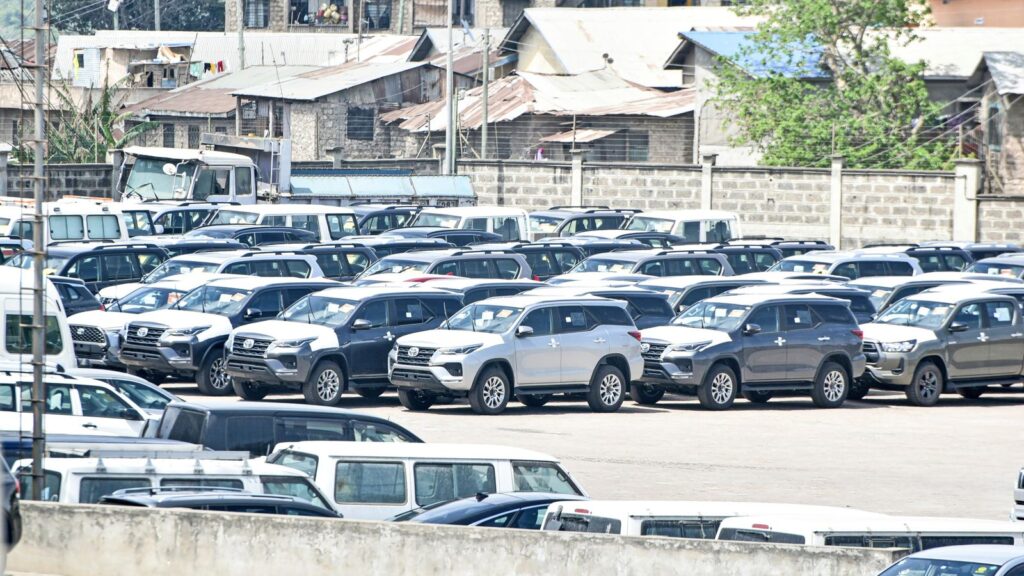Debt Struggles Hamper Kenyan Companies Amid Falling Prices of Imported Second-Hand Cars
Kenya’s financially distressed companies are grappling to secure a lifeline through administration, owing to their significant debts and delayed implementation of recovery measures, which often push them into liquidation. The administration process involves appointing an administrator to manage a distressed firm for one year, with a possibility of extension by the court or sale as a going concern to enhance value for the benefit of its creditors. This process helps regain control of the firm when it faces severe cash flow problems, insolvency, and serious threats from creditors, aiming to rescue the company, achieve better results for creditors, and then sell off its property.
Data from the Office of the Official Receiver, Kenya, shows that petitions for company liquidations have increased, reaching 30 since July 2023, highlighting the extent of financial distress facing businesses due to economic downturn and governance-related issues. Administrators indicate that maintaining distressed companies is becoming increasingly challenging because of massive debts that cannot be repaid within the administration period, citing the collapsed retail chain Nakumatt, which went under with an estimated Ksh38 billion ($292.6 million) worth of claims. Liquidation, or winding up, is the process by which a company’s existence is terminated by selling its assets to pay off its debts. Any remaining monies after all debts, expenses, and costs have been paid off are distributed amongst the company’s shareholders.
Since the introduction of the administration process in 2015, Nakumatt Holdings Ltd, ARM Cement Plc, and Deacons Plc were among the first to undergo the process, with hopes that their recovery would set a positive trend for other companies. However, these companies failed to survive the administration process, paving the way for their liquidation.
“These companies are heavily indebted, and they can’t come out of that big hole, so what we have been doing is trying to sell those assets to somebody who can buy them and put them to better use because by the time the company has gone that route, it can take long to recover,” says Peter Kahi, a partner at PKF Consulting (K) Ltd, a consultant firm in Nairobi.
The number of petitions for the liquidation of companies presented to court has more than doubled in the last nine years, even after the new Insolvency Act (2015) introduced a provision for an ‘administration process’ to give financially troubled firms a chance to recover. Petitions for liquidations by the court rose to 30 in the 2023/2024 fiscal year, up from 13 in the 2015/2016 fiscal year. The number of companies pushed into voluntary liquidation also increased, reflecting the growing challenges faced by businesses.
Ken Gichinga, Chief Economist at Mentoria Economics, notes that the recovery of companies under administration requires a combination of administrative and managerial expertise to address issues related to a weak macroeconomic environment and a ‘trust deficit’ crisis caused by the ‘receivership’ tag. “Companies in receivership have to fight two battles: a weak economic environment and the trust deficit associated with the high-risk profile of companies in receivership,” says Gichinga.

The persistent revenue shortfall and increased cost of funding have exacerbated the financial distress of Kenyan businesses, leading to a challenging economic landscape. The country’s economic growth has averaged 4.6 percent over the past five years, falling short of the 10 percent growth rate targeted under the government’s long-term development plan, Vision 2030. This sluggish growth, coupled with high public debt and an underperforming stock market, has compounded the difficulties faced by companies.
Kenyan companies in financial distress now have more options for rescue, such as schemes of arrangement, which have shown significant potential as a method of debt restructuring. These schemes are provided for in the Companies Act, 2015, and offer advantages such as avoiding multiple individual agreements, providing greater certainty around the timing and outcome of the proposal, and making the scheme binding on any creditors or members who voted against it, provided it has court approval.
In conclusion, the financial distress faced by Kenyan companies is a complex issue driven by massive debts, delayed recovery measures, and a challenging economic environment. The administration process and schemes of arrangement provide some avenues for rescue, but the road to recovery remains arduous for many businesses.
Prices of Imported Second-Hand Cars in Kenya Drop as Shilling Strengthens Against Dollar

The prices of popular brands of imported second-hand cars in Kenya have seen significant declines, with some models experiencing double-digit drops between January and the present, driven by the strengthening of the Kenyan shilling against the dollar.
Dealers have noted a steady easing of prices since the beginning of the year, offering relief to cost-conscious Kenyan buyers who prefer used vehicles. According to the Central Bank of Kenya, the official exchange rate shows the shilling now trading at 128.67 units per dollar, compared to 160.8 units in January.
For example, a 2017 Landcruiser Prado TX now sells for Ksh4.5 million ($0.036 million), down from Ksh5.3 million ($0.0424 million) at the start of the year, marking a 17.7% decrease. Similarly, a used 2017 Subaru Outback is now priced at Ksh2.5 million ($0.02 million), compared to Ksh3 million ($0.024 million) in January, reflecting a 16.6% reduction.
Cindy Ndeda, marketing manager at SBT Japan’s Kenyan office, attributed these price drops to the shilling’s recovery against the dollar. Charles Munyori, secretary-general of the Kenya Auto Bazaar Association, also acknowledged that the strengthening shilling has led to lower import costs, influencing the decline in car prices.
Dealers such as Vozilo Motors have observed price decreases across various models. For instance, a Nissan Note now costs Ksh850,000 ($6,576), down from Ksh1 million ($7,736) previously. A Mercedes Benz C200 is now priced at Ksh3 million ($23,210), compared to Ksh3.5 million ($27,079) earlier in the year, while a Nissan X-Trail is retailing at Ksh2 million ($0.016 million), down from Ksh2.3 million ($0.0184 million).
These price reductions come as a welcome relief to dealers who faced sluggish sales last year due to soaring prices driven by the shilling’s depreciation against the dollar. The surge in prices towards the end of 2023, where second-hand car prices rose by over Ksh600,000 ($0.0048 million), underscored the impact of currency fluctuations on imported goods.
With Japan being the largest source of second-hand cars in Kenya, the affordability of these vehicles relative to new cars continues to drive their popularity. Second-hand cars remain popular in Kenya due to their lower prices compared to new vehicles, with imports also coming from the United Kingdom.
Kenya’s regulations allow the importation of second-hand cars within an eight-year age limit, restricting the entry of vehicles manufactured before 2017 into the local market.
Read More POWER AND PROSPERITY: KENYA’S WEALTHIEST INDIVIDUALS OF 2024



